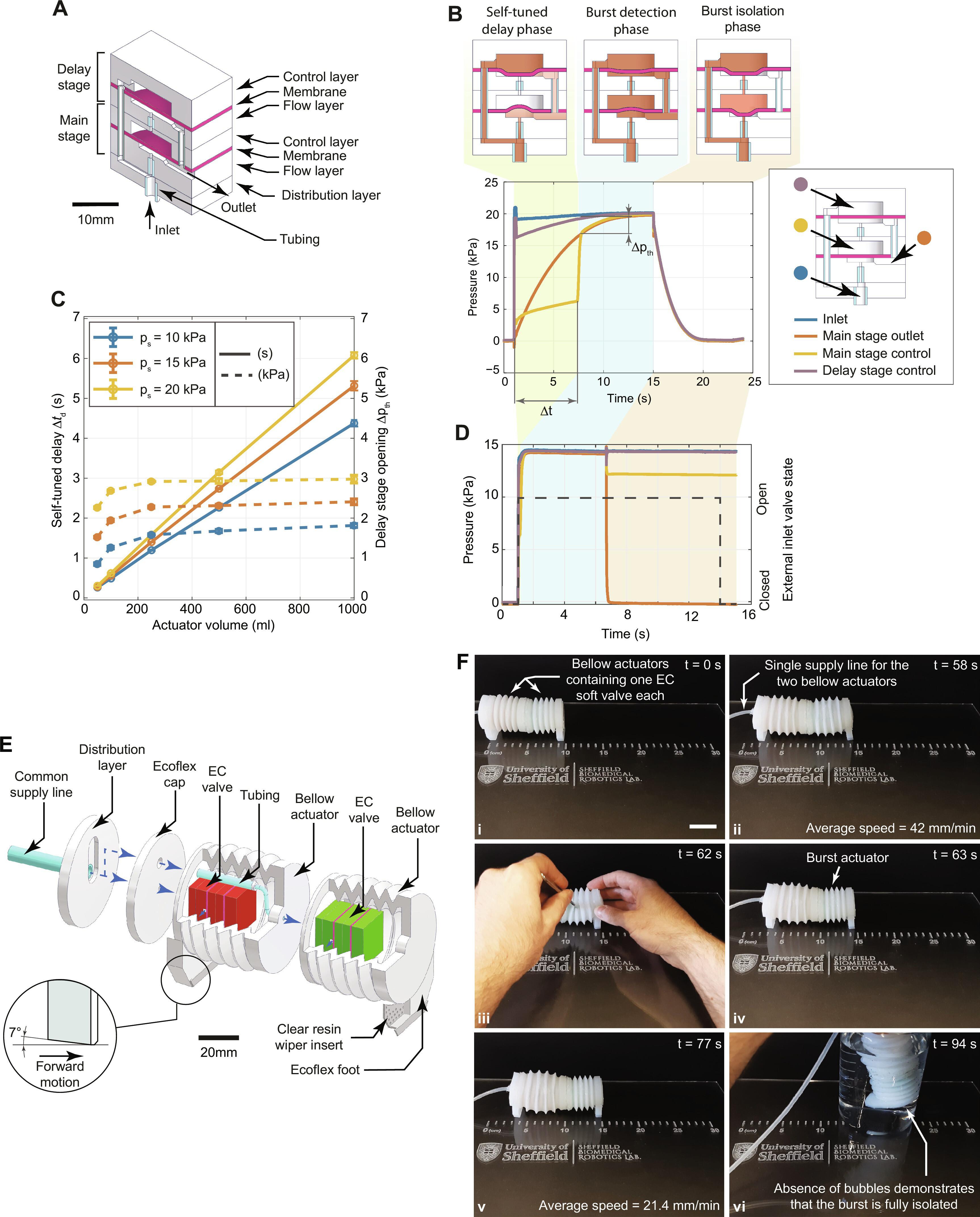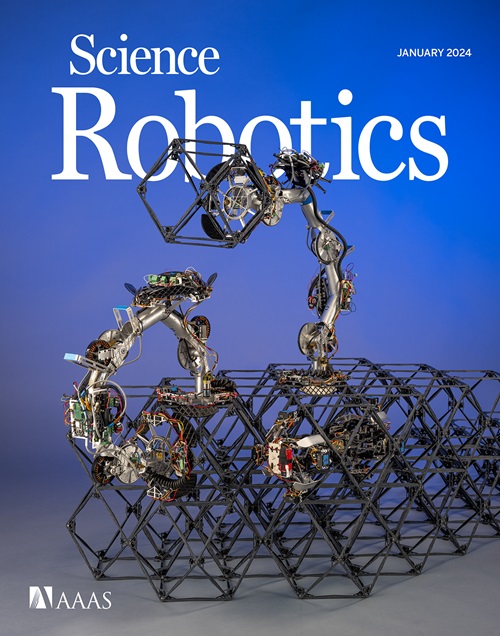多模态软阀门可提高物理响应能力,实现软机器人的抢先恢复能力
IF 26.1
1区 计算机科学
Q1 ROBOTICS
引用次数: 0
摘要
复原力对于生物系统的自我保护至关重要:人类从伤口中恢复过来,要归功于免疫系统,它能够自主地采取多阶段的应对措施,促进伤口愈合。类似的被动机制也能使气动软机器人克服常见故障,如刺穿或过压引起的爆裂。从用于机器人可重构性的容错控制器到自愈材料,最近的技术进步为机器人的恢复能力铺平了道路。然而,这些技术需要强大的处理器和大型数据集或外部硬件。如何利用最少的计算和物理资源延长受损软体机器人的工作寿命仍不清楚。在这项研究中,我们展示了一种多模式气动软阀,它能够在故障触发下做出被动弹性反应,以防止或隔离软机器人的损坏。在正向操作模式下,该阀门只需一个供气压力,就能在 21 毫秒内将被刺破的软充气元件与软机器人的其他部分隔离开来。在反向操作模式下,阀门可以被动地保护机器人免受外部干扰造成的过压,避免塑料变形和爆裂。此外,将这两种模式结合在一起,还能创造出一种能够自主隔离爆裂的内源控制阀门。我们展示了软阀门的被动和快速响应,以及将其整体集成到抓手和爬行机器人中的可能性。本研究提出的方法为基于控制器的弹性提供了一种分布式小尺寸替代方案,有望帮助软机器人实现不间断的持久运行。本文章由计算机程序翻译,如有差异,请以英文原文为准。

Multimodal soft valve enables physical responsiveness for preemptive resilience of soft robots
Resilience is crucial for the self-preservation of biological systems: Humans recover from wounds thanks to an immune system that autonomously enacts a multistage response to promote healing. Similar passive mechanisms can enable pneumatic soft robots to overcome common faults such as bursts originating from punctures or overpressurization. Recent technological advancements, ranging from fault-tolerant controllers for robot reconfigurability to self-healing materials, have paved the way for robot resilience. However, these techniques require powerful processors and large datasets or external hardware. How to extend the operational life span of damaged soft robots with minimal computational and physical resources remains unclear. In this study, we demonstrated a multimodal pneumatic soft valve capable of passive resilient reactions, triggered by faults, to prevent or isolate damage in soft robots. In its forward operation mode, the valve, requiring a single supply pressure, isolated punctured soft inflatable elements from the rest of the soft robot in as fast as 21 milliseconds. In its reverse operation mode, the valve can passively protect robots against overpressurization caused by external disturbances, avoiding plastic deformations and bursts. Furthermore, the two modes combined enabled the creation of an endogenously controlled valve capable of autonomous burst isolation. We demonstrated the passive and quick response and the possibility of monolithic integration of the soft valve in grippers and crawling robots. The approach proposed in this study provides a distributed small-footprint alternative to controller-based resilience and is expected to help soft robots achieve uninterrupted long-lasting operation.
求助全文
通过发布文献求助,成功后即可免费获取论文全文。
去求助
来源期刊

Science Robotics
Mathematics-Control and Optimization
CiteScore
30.60
自引率
2.80%
发文量
83
期刊介绍:
Science Robotics publishes original, peer-reviewed, science- or engineering-based research articles that advance the field of robotics. The journal also features editor-commissioned Reviews. An international team of academic editors holds Science Robotics articles to the same high-quality standard that is the hallmark of the Science family of journals.
Sub-topics include: actuators, advanced materials, artificial Intelligence, autonomous vehicles, bio-inspired design, exoskeletons, fabrication, field robotics, human-robot interaction, humanoids, industrial robotics, kinematics, machine learning, material science, medical technology, motion planning and control, micro- and nano-robotics, multi-robot control, sensors, service robotics, social and ethical issues, soft robotics, and space, planetary and undersea exploration.
 求助内容:
求助内容: 应助结果提醒方式:
应助结果提醒方式:


